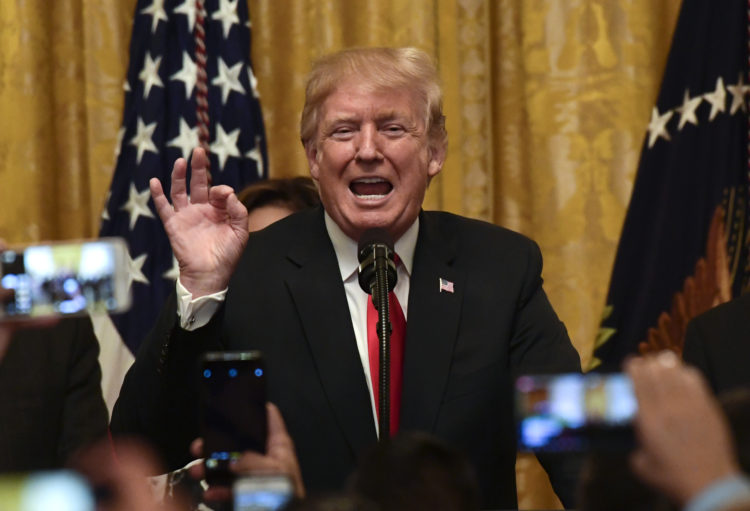On Monday, President Trump announced a new wave of tariffs on Chinese imports. Robert E. Lighthizer, the United States Trade Representative (USTR), has been ordered to place new tariffs on approximately $200 billion worth of Chinese imports at a rate of 10 percent, according to an official statement from the White House.
The new tariffs are set to begin September 24 and will increase from 10 percent to 25 percent on New Year’s Day 2019. This delay offers U.S. firms the opportunity to find alternate suppliers outside of China, according to a report from Reuters. Currently, the U.S. has tariffs on $50 billion worth of Chinese imports.
China answered back Tuesday morning, slapping “$60 billion in tariffs” on U.S. goods beginning on the same day. According to CNBC, the Chinese tariffs will be anywhere from five to 10 percent.
For now, products made by tech companies like Apple and Fitbit have been spared from the new tariffs, along with an assortment of other goods such as “certain chemical inputs for manufactured goods, textiles and agriculture; certain health and safety products such as bicycle helmets; and child safety furniture such as car seats and playpens,” according to a press release from the USTR.
However, President Trump warned that if China does retaliate the U.S. “will immediately pursue phase three, which would entail an additional $267 billion of tariffs on Chinese imports.” If these additional tariffs were implemented, many of the products excluded during this round would be impacted, including, in all likelihood, the popular iPhone and other Apple products.
According to the USTR, the new tariffs affect a wide range of products including but not limited to: baseball mitts, building materials, car parts, frozen meats and fish, furniture, metals, and photographic film. Bicycles and related products alone account for nearly $1 billion of the total goods impacted, according to a report from Bicycle Retailer.
After Monday’s announcement, the U.S. dollar rose as investors, worried about the trade dispute between Washington and Beijing, scramble to look for the secure “safe-haven” of the USD, according to Reuters.
As the U.S. dollar rose both the Australian dollar and the Chinese yuan fell, and many “emerging market currencies” were down slightly as well, according to another report from Reuters. The Japanese Yen rose, however, after “a two-month low.”
Crude oil, which had been rising because of the imminent tariffs against Iranian oil exports, fell Monday as spooked investors were worried that the ongoing trade dispute would drive down global demand. However, by Tuesday oil had rebounded, according to Reuters.
“The market has reacted to the latest U.S-China tariff news by pushing the dollar up against currencies like the euro, pound and Australian dollar,” said IG Securities senior FX strategist Junichi Ishikawa during an interview with Reuters. “In addition, emerging currencies have also come under pressure, giving the dollar further support.”
Already have an account? Sign In
Two ways to continue to read this article.
Subscribe
$1.99
every 4 weeks
- Unlimited access to all articles
- Support independent journalism
- Ad-free reading experience
Subscribe Now
Recurring Monthly. Cancel Anytime.











What readers are saying
Generating a quick summary of the conversation...
This summary is AI-generated. AI can make mistakes and this summary is not a replacement for reading the comments.